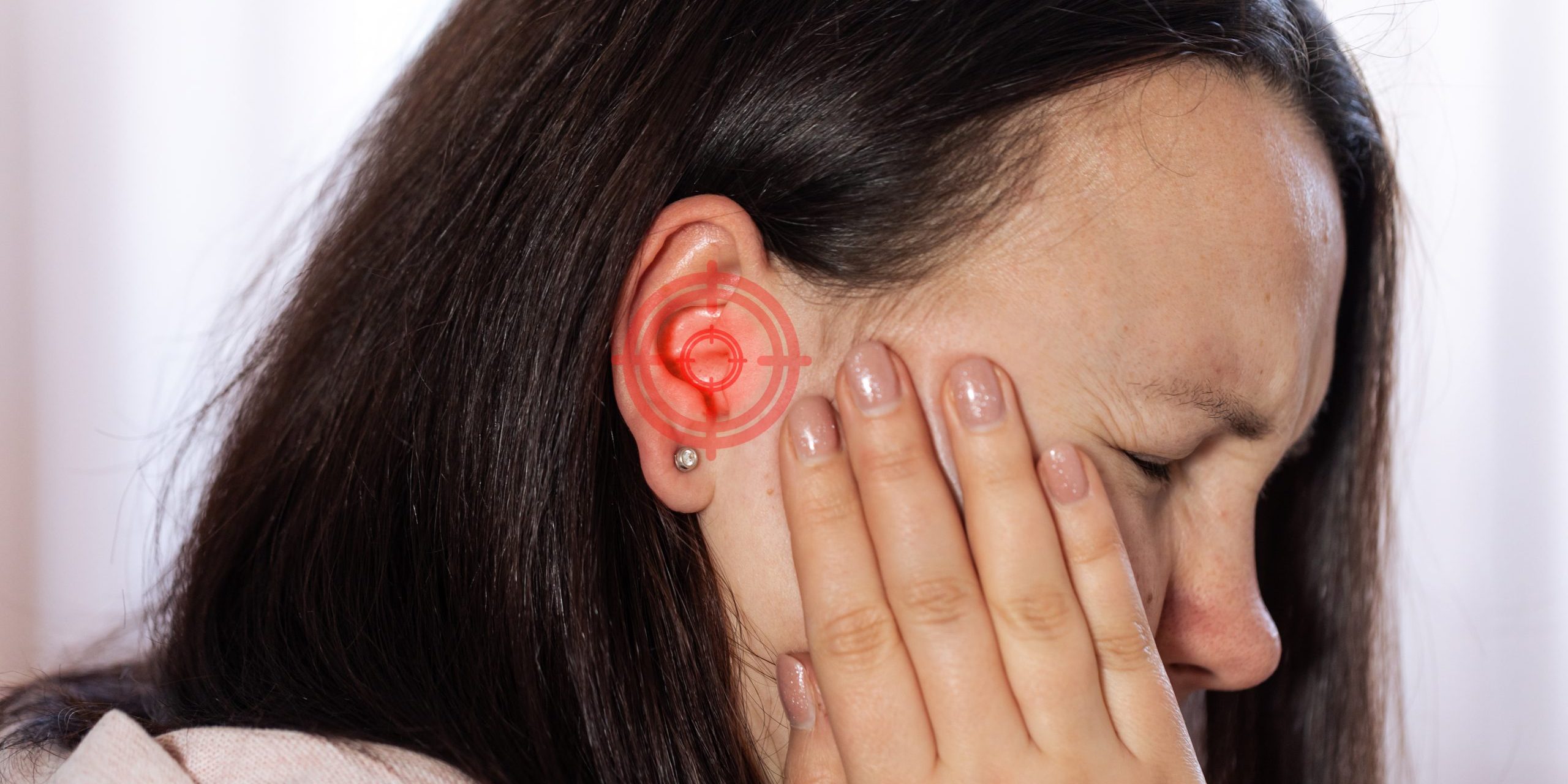Otitis externa, commonly known as swimmer’s ear, is a common inflammatory condition affecting the external ear canal. The condition manifests as an inflammation of the external auditory canal, which connects the pinna of the ear to the tympanic membrane. It is usually caused by some bacterial or fungal infection. It often causes severe pain and can occur in both adults and children or babies. Understanding the etiology and appropriate management strategies is vital to the effective treatment and prevention of this condition.
Otitis externa: Causes
The main causative factors of otitis externa are infection by a bacterium or rarely by a fungus, which triggers the development of inflammation. The development of inflammation involves the proliferation or entry of bacteria or fungi into the skin of the external auditory canal through, for example, a crevice. Certain predisposing factors increase the risk of developing otitis externa, including prolonged excessive moisture in the ear, trauma, and skin conditions (eg, dermatitis).
This condition is also characterized as swimmer’s disease as the extensive sweating or excessive moisture in the ear due to water remaining in it after swimming in the sea contribute to the formation of a favorable environment for the proliferation of pathogenic microorganisms. Causing some trauma to the ear due to cleaning with cotton swabs or tweezers, finger scratching, and the use of earplugs and headphones may contribute to the formation of wounds on the skin surface of the external auditory canal. These wounds can act as portals of entry for pathogenic microorganisms that trigger otitis externa. Finally, conditions of allergic or skin origin, such as allergic contact dermatitis, psoriasis and atopic dermatitis may facilitate the development of inflammation.
Symptoms of otitis externa
In early stages, the clinical presentation of otitis externa is usually mild and includes itching in the ear, the appearance of redness in the external auditory canal, mild discomfort that becomes more intense when pressure is applied to the earlobe or tragus, which is the small triangular protuberance on front of auricle; At the same time, otorrhoea may occur, i.e. discharge of a small amount of clear, odorless fluid from the ear. However, the symptoms of the condition progress quickly if targeted treatment is not applied immediately.
If the condition worsens, additional symptoms appear, such as more intense pain in the ear (otalgia) and otorrhoea that can be purulent or serous, while the itching and redness worsen. Inflammation contributes to the development of edema and the accumulation of fluid in the external auditory canal. At the same time, there is a feeling of fullness in the ear or blockage of the external auditory canal, as well as hearing loss (hard of hearing). In advanced cases of the condition, the pain is quite intense and may radiate to the face, neck and on the same side of the head as the ear with otitis externa. Complete obstruction of the external auditory canal, swelling and redness of the outer part of the ear, swelling of the cervical lymph nodes in the neck and fever are also manifested.
Diagnosis of outer ear infection
The diagnosis of otitis externa is mainly based on clinical evaluation. Taking a detailed history and examining the ear with an otoscope or otoscope are the cornerstones of diagnosis. Otomicroscopy is the diagnostic test of choice, as it reveals an enlarged, erythematous external auditory canal with or without discharge. Otomicroscopy is also used to examine the tympanic membrane in order to assess its integrity and detect any perforation of the tympanic membrane. Finding a hole in the eardrum largely determines treatment, as some medications given for outer ear infection can cause damage to the middle ear. In some cases where the results of the treatment are not as desired, it may be necessary to take a sample of the fluid flowing from the ear in order to send it for culture to clarify the pathogenic microorganism that caused the otitis externa. This process contributes to the subsequent administration of the appropriate antibiotic treatment.
Treatment of outer ear infection
Treatment in cases of outer ear infection aims at the complete resolution of the inflammation in order to heal the skin of the external auditory canal. If the external auditory canal is blocked, the ear is cleaned of secretions or wax, and then a small piece of gauze or a sponge soaked in antibiotic ointment or special drops is pushed into the external auditory canal. At the same time, the patient is given topical medicinal preparations in the form of ear drops, which may include substances such as acetic acid to restore the normal pH of the ear canal, cortisone to reduce inflammation, and an antibiotic or antifungal medicine, depending on whether the cause of otitis externa is some bacteria or fungus respectively. If otitis externa does not resolve with topical drops or severe or persistent infections are found, oral antibiotics are in order. Analgesic or anti-inflammatory drugs are also given to relieve pain and inflammation.
In general, it is recommended to avoid water exposure of the affected ears during treatment. Therefore, swimming and the entry of water into the ear during bathing should be avoided, as well as the use of headphones and earplugs. During bathing, the entrance to the external auditory canal should be secured by placing a piece of cotton wool coated externally with petroleum jelly. As otitis externa may cause particularly persistent symptoms, it needs immediate and targeted treatment. ENT Surgeon in Athens Dr. Olga Papadopoulou carries out the targeted diagnosis of external otitis and the implementation of the appropriate treatment plan, with the aim of relieving the patient of the annoying symptoms.


